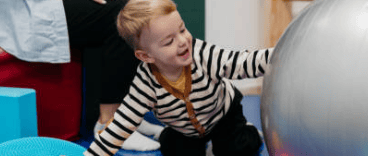Primitive Reflexes and Brain Imbalance
New Insights into Childhood Neurodevelopment
Dr. Yvonne
5/10/20251 min read


Primitive reflexes are involuntary motor responses present in newborns, essential for early survival and brain development. These reflexes—such as the Moro, rooting, and ATNR—typically integrate within the first year of life as the brain matures. However, when these reflexes remain active beyond infancy, they may indicate disrupted neurological development and are increasingly associated with attention, behavioral, and learning challenges.
A growing body of research points to a significant link between retained primitive reflexes and delayed cortical maturation. In particular, hemispheric asymmetry—or "brain hemisphericity"—has emerged as a key factor. This refers to the uneven development or activity between the two cerebral hemispheres, which can lead to functional disconnection and impairments in sensory processing, coordination, language, and executive functioning.
In a 2024 peer-reviewed article, Dr. Robert Melillo and colleagues presented evidence that supports this framework of underconnectivity and imbalance. Their research suggests that specific patterns of primitive reflex retention correspond with delayed development in one hemisphere, especially in children diagnosed with neurobehavioral disorders such as ADHD and autism. The study emphasized that these findings have profound implications for early assessment and targeted intervention strategies (Melillo et al., 2024).
Understanding and addressing these early developmental patterns—particularly through movement-based and hemisphere-specific stimulation—may offer a promising path toward supporting more balanced brain development. This approach is gaining recognition for its potential to promote neuroplasticity and improve outcomes in children with diverse learning and behavioral profiles.
